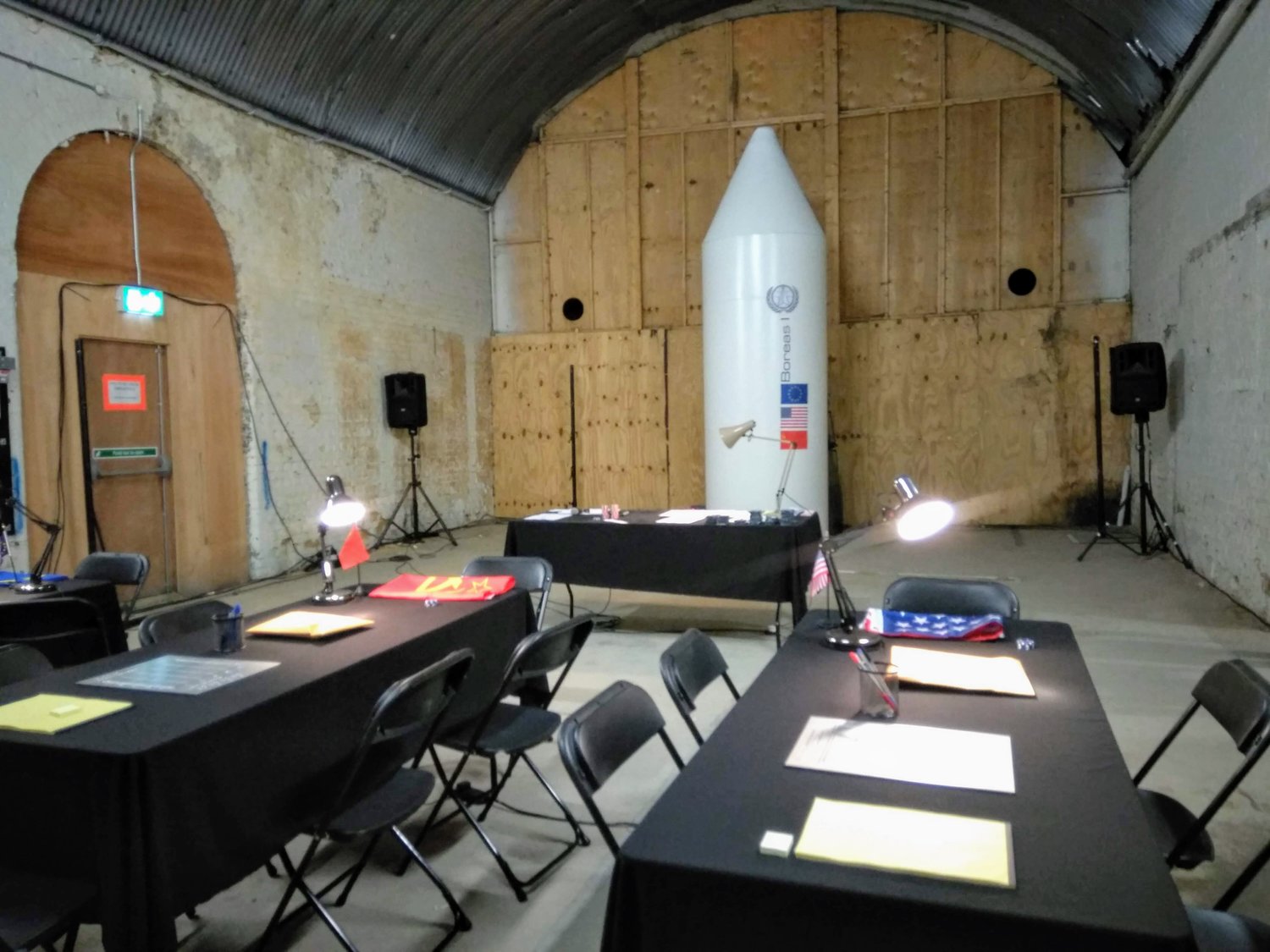
A game can be many things – a board on a table, a ball in a field, or even just a story. But can a game be anything? Last month I put that to the test when I acted as a moderator for the “immersive game” (or megagame, if you prefer) Bring Them Home. For the uninitiated, Bring Them Home sees three teams representing foreign space agencies work together to bring back a stranded astronaut following a disaster in deep space. It’s silly and brilliant, but how can we categorise it in gaming?
The Treehouse invited the producers to host Bring Them Home with us back in September, and I got some experience running the game then, but after two weeks of back-to-back shows I think I understand something new about the possibilities of game design. Never one to shy from a challenge, I thought I’d have a go at answering the above question. Wish me luck!
Let’s start with the basics. Bring Them Home certainly features components, strategy, social deduction, a clear objective and multiple paths to victory. Its influences are without question rooted in gaming. However, it may not be that simple. For one thing, it’s very difficult to play the game more than once, as many of the game’s secrets and revelations fall flat if you’ve known them all along. For another, it requires a full team of moderators to keep things running smoothly – six in this last run, for just twenty-one players. Those moderators inevitably have an impact on the game, even as they remain nominally neutral. You might consider that evidence enough that it isn’t a board game. So perhaps it’s a roleplaying game instead?
There’s some evidence for that too. Between games my fellow moderators and I had a lot of animated discussions about how the game could be tweaked, what had worked or not worked in the previous game, and what we could learn from it. That flexibility matches what GMs in roleplaying games experience, changing their plans on a dime. Sometimes we would enact changes that seemed drastic (like omitting entire sections of the game) in the half-hour “reset” portion between runs. Other times the players would bring their own surprises (like the game where six more people than we expected showed up!), and we had to think up solutions on the fly. In a typical board game, none of that would happen. The boundaries are set from the very beginning (that’s why the first thing you do is read the rulebook), and can’t just be fudged to make things go differently. In roleplaying games this is slightly more common, but the practice of a GM lying about their die rolls remains controversial. In short, the game isn’t fair, and we know it.
But so what? It seems to me that if you’re inclined to attend a theatrical gaming experience like Bring Them Home, you’re going to know that it’s not a typical board game anyway. The X-factor that I’ve always admired in gaming is creative thought within restricted space – the joy of taking a system and exploring all its possibilities. And thanks to the presence of the moderators, and the knowledge that this will be our players’ only shot to interact in this specific way, those possibilities appear boundless. I’ll let you in on a secret – behind the set design and hosting patter, the mechanics of Bring Them Home are very, very simple. It just so happens that because all your actions go through the mods, and because the mods are trained to “yes-and” pretty much every action you can take, you don’t need to know where all the boundaries are.
Do you want to try and bribe the press? You can do that! Do you want to use distraction tactics on the other teams? You can do that! Do you want to use the moderators to lie, sending them up to the main desk pretending to do an action while actually doing something else? You absolutely can do that. And it isn’t just limited to sneakiness either. One player brought in a box of Maltesers hoping to make friends with everyone around the room, and to make himself stand out in case that was important. As it turned out, it was absolutely vital, and his Malteser-based antics won his team the game. You won’t be surprised to learn that the (very sparse) game rules don’t include the word “Malteser” once. That was his stroke of genius, and it paid off.
Bring Them Home isn’t a board game, or a roleplaying game, or a theatre show. It’s something new, but it isn’t an island. Escape rooms touch on many of these ideas too, though the solutions to puzzles tend to be more linear. And live roleplaying games are really picking up steam, combining improv theatre with a common rules structure to tell long-form stories. On the more hardcore end, LARP is finally having its day in the sun with national projects like Empire attracting record attendance. The intersection of theatre and gaming is arguably as old as the televised game show, but the recent renaissance looks to be opening up new possibilities on all fronts. Just watch how far it can go.
by Patrick Lickman

دیدگاهتان را بنویسید